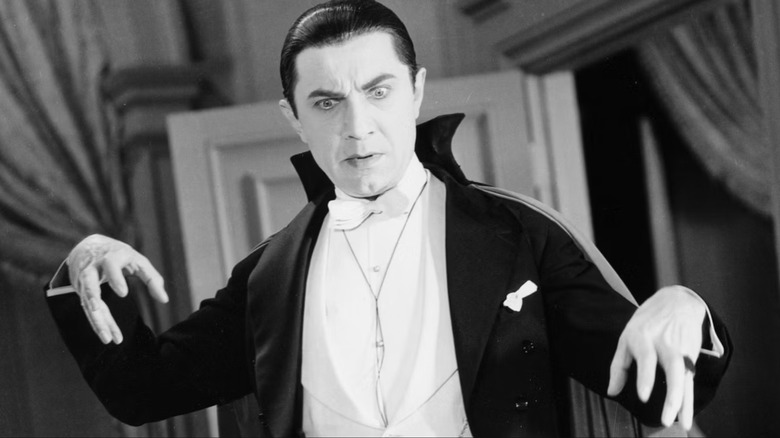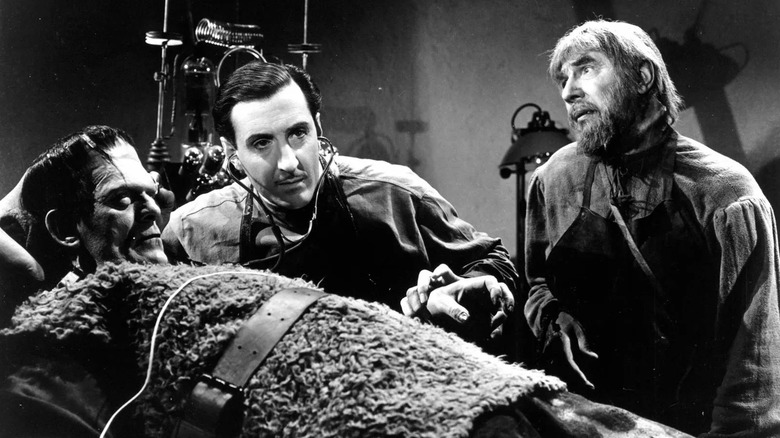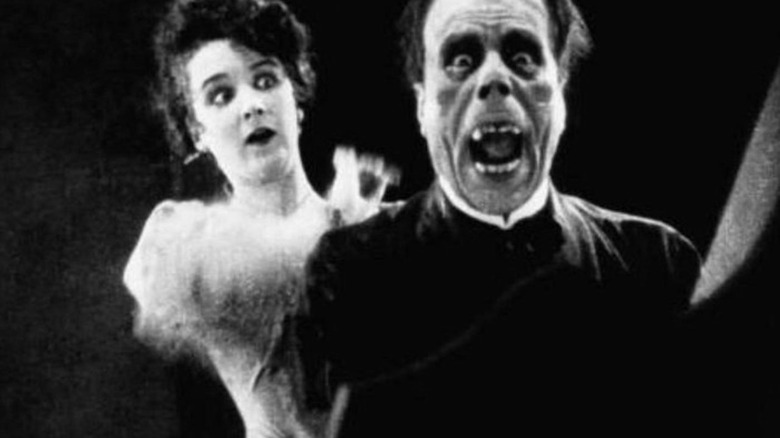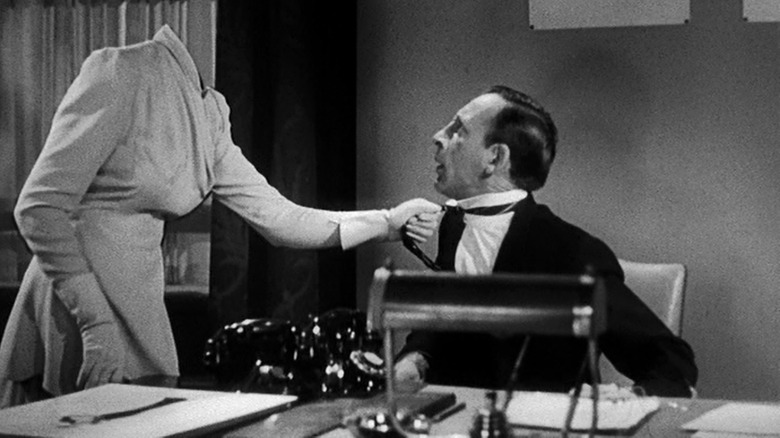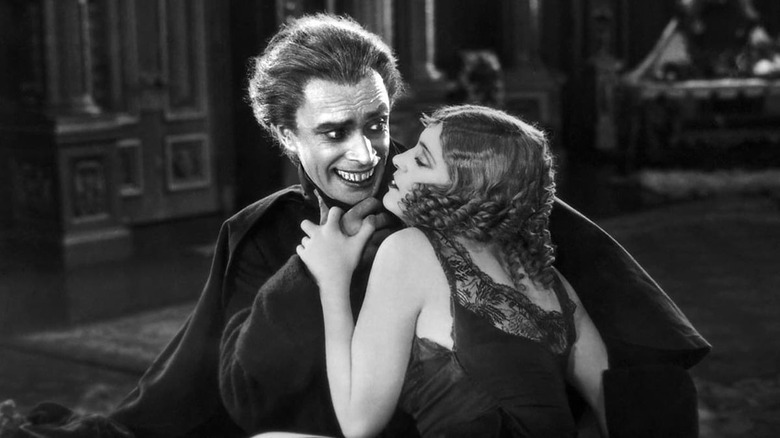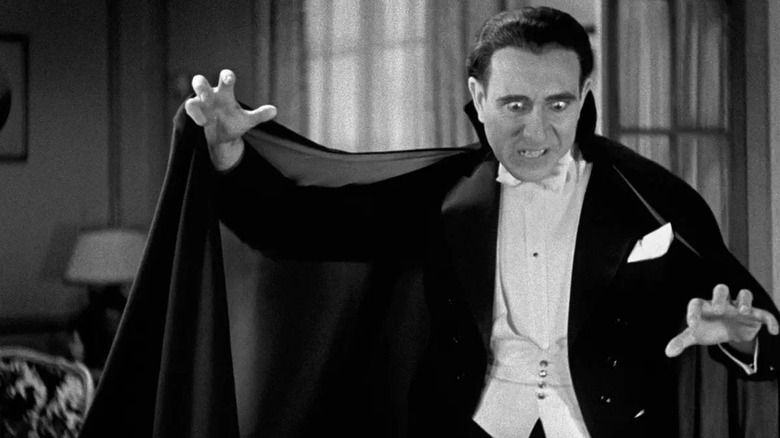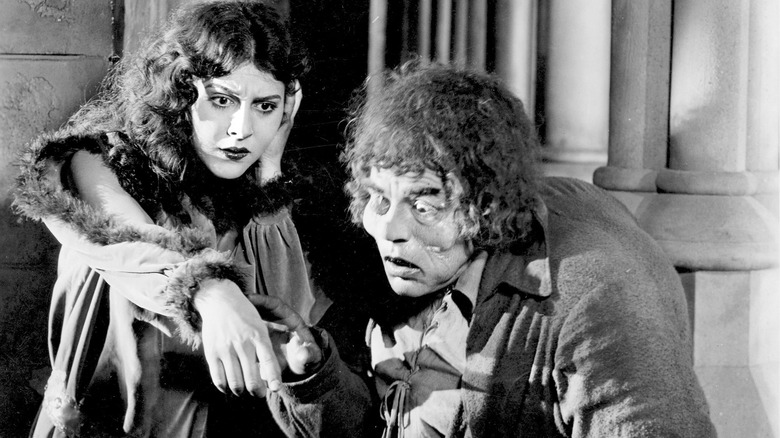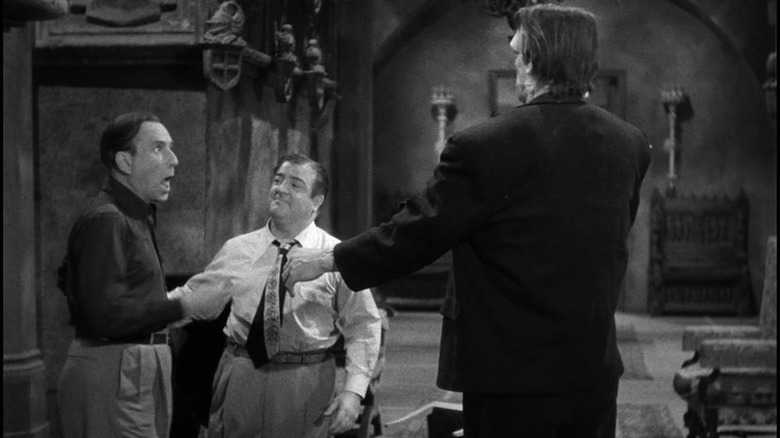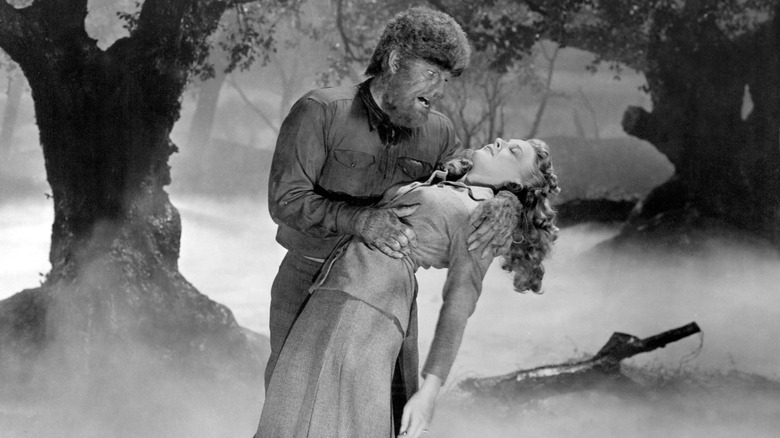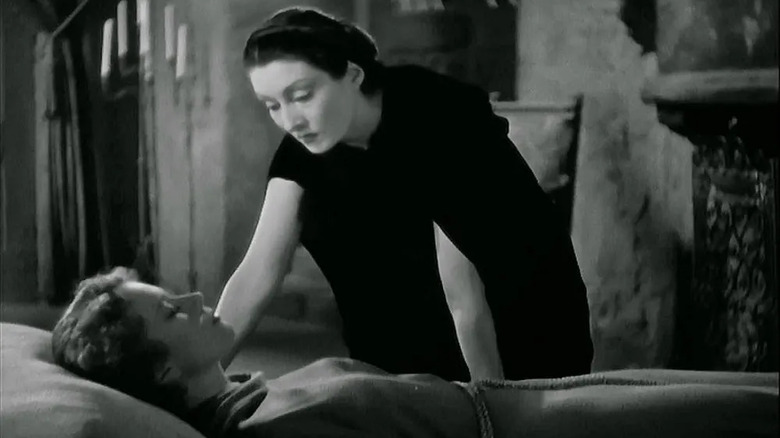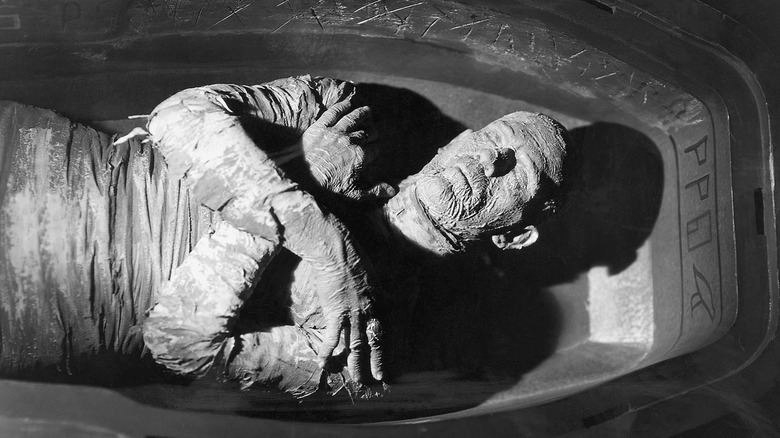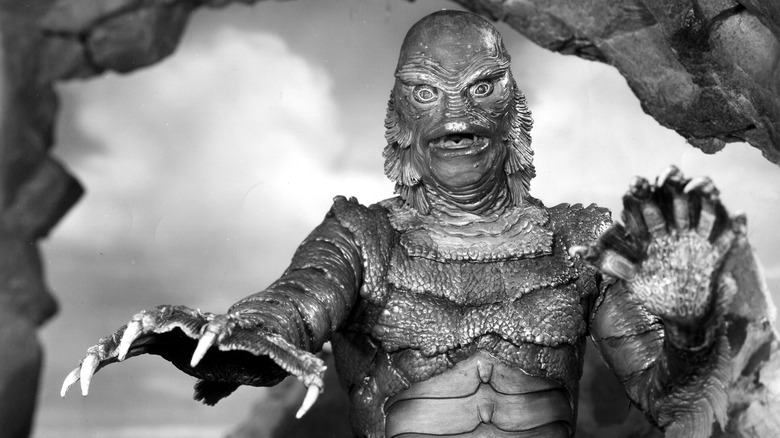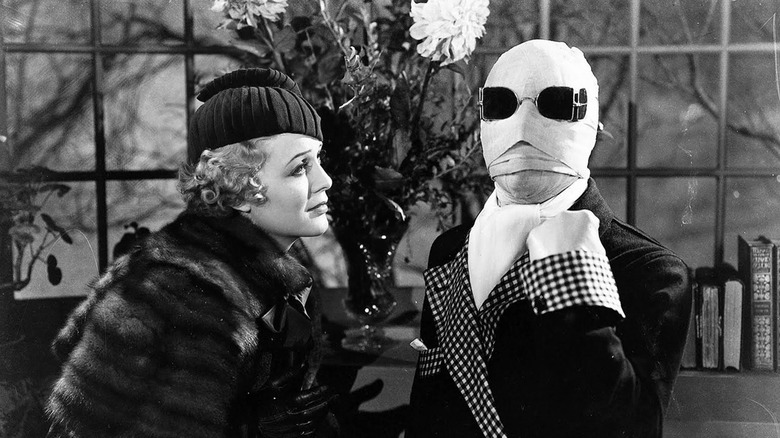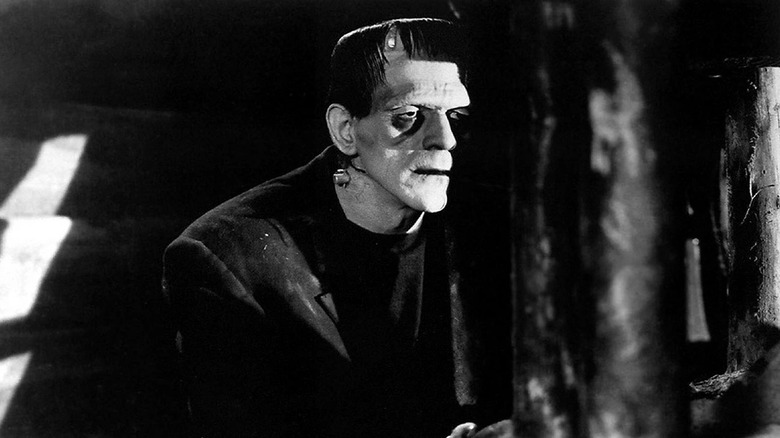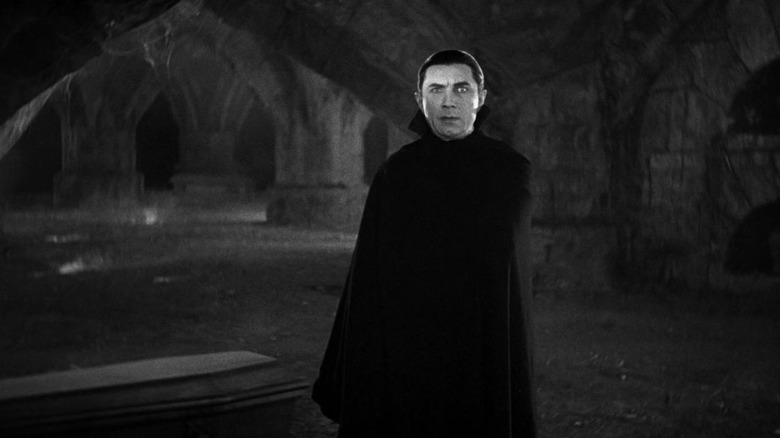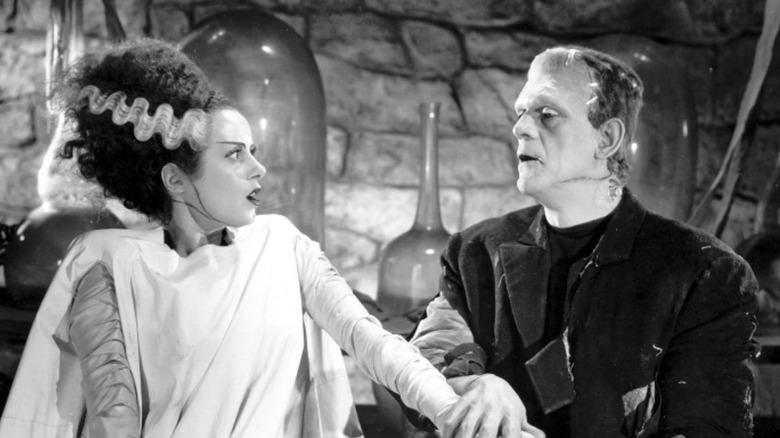The 15 Best Universal Monster Movies, Ranked
The horror genre owes a great debt to the success of Universal Monster movies, the series of nearly 50 films released throughout the 1920s to 1950s that solidified the company as one of the major studio players. The company hadn't planned on becoming the go-to house of horrors, but once they realized in 1931 that there was marketing power in categorizing them together, legendary status was quickly achieved. While the company officially started grouping the films together in 1931, some of Universal's strongest monster films premiered in the decade prior.
Many of the studio's films serve as the building blocks of horror storytelling still utilized today, but with so many titles to consume, figuring out which ones are worth revisiting can feel like an overwhelming task. Fortunately, that's what we're here for. I'm one of those weirdos who has watched every monster movie ever made by Universal Studios, and I'm more than happy to spread that knowledge with the world. While the company has had some fantastic reboots and remakes in recent years, this list is focusing solely on the classic monsters of yesteryear. To put it simply, if it wasn't shot in black and white, it's not showing up on this list. With that specification out of the way, here are the 15 best Universal Monster Movies, ranked.
15. Son of Frankenstein
Often viewed as "the last great 'Frankenstein' film," 1939's "Son of Frankenstein" was the third installment in Universal's series of "Frankenstein" films, featuring an impressive roster of familiar faces. Boris Karloff returns to play the Monster for a final time (but with a new look), joined by Bela Lugosi as Ygor, and Basil Rathbone as Baron Wolf von Frankenstein, the son of Henry Frankenstein. "Son of Frankenstein" succeeds as both a monster movie and the tale of a son desperate to cleanse the sins of his father. Rathbone is absolutely magnificent as Baron Wolf von Frankenstein, and director Rowland V. Lee crafts a deeply somber film littered with black comedy that was uncommon during its era. Universal Monster films are often viewed through a modern lens as not being "scary" enough, but "Son of Frankenstein" holds up as a genuinely unsettling film filled with plenty of existential anguish.
14. The Phantom of the Opera
While not classified as one of the "official" Universal Monsters, without the silent-film adaptation of "The Phantom of the Opera," the monster canon as we know it to be would not exist. Directed by Rupert Julian and starring Lon Chaney (Sr.) as the titular Phantom of the Paris Opera House. If you've seen Andrew Lloyd Webber and Joel Schumacher's movie musical of the same name, the story is roughly the same, but the 1925 version is groundbreaking for the reveal of Chaney's horrific and self-devised make-up. The story of the Phantom has been told and retold countless times, but few can hold a candle to the ghastly brilliance of Lon Chaney. Universal managed to keep the iconic reveal a secret until the film's premiere, and the rest is horror history.
13. The Invisible Woman
Make no mistake, "The Invisible Woman" is nowhere near close to being a horror movie, instead taking the invisibility concept established in "The Invisible Man" and turning it into a screwball comedy complete with an appearance from Shemp Howard of "The Three Stooges" fame. The film focuses on a wealthy lawyer (John Howard) who funds an eccentric inventor (John Barrymore) to develop an invisibility device. The two test the final product on a department store model named Kitty Carroll (Virginia Bruce) who upon turning invisible decides to use her newly found state to enact revenge against her sadistic ex-boss, Mr. Growley (Charles Lane).
Despite Bruce having the titular role, the film belongs to John Barrymore, who is having an absolute blast playing the inventor. When Universal announced that they were going to continue updating their classics following the success of Leigh Whannell's "The Invisible Man," Elizabeth Banks was announced as directing and starring in a remake of "The Invisible Woman," but there's not been much movement on the project since. It's a shame, because if anyone could capture what makes "The Invisible Woman" such a delightful film, it's Banks.
12. The Man Who Laughs
Following German expressionist filmmaker Paul Leni's success with "Waxworks" and "The Cat and the Canary," he delivered the horror-tinged romantic melodrama, "The Man Who Laughs." Based on Victor Hugo's 1869 novel of the same name, the film follows a man named Gwynplaine, who had a permanent smile carved into his face by the King in an act of revenge against his father. Due to his unsettling appearance, Gwynplaine is adopted by a traveling showman, and becomes a notable figure as "The Laughing Man." However, Gwynplaine finds his face horrifying, and believes it makes him unworthy of love from the beautiful, blind Dea (Mary Philbin).
"The Man Who Laughs" was a massive influence on not just the future Universal Monster films, but also one of the most iconic figures in all of pop culture -– The Joker. In 2005, the graphic novel exploring the first encounter between Batman and the Joker was titled "Batman: The Man Who Laughs" in homage to the film that inspired Joker creators Bill Finger, Bob Kane, and Jerry Robinson all those years ago. "The Man Who Laughs" may not hit the horror highs like some of the other films of this era, but it's horrific imagery truly changed the genre, and deserves to be recognized for its impact.
11. Drácula
Back in the 1920s, Hollywood studios were dependent on the successful exportation of their films to other languages, which was pretty easy to do during the silent film era. Unfortunately, with the introduction of sound came a new problem: making the films accessible for non-English speaking audiences. In 1931, Universal filmed an additional version of "Dracula," on the same set as Tod Browning's original after the English-production had wrapped for the day, with an entirely different cast of Spanish-speaking actors. The result was "Drácula," a fantastic adaptation of the source material with a delightfully camp lead performance by Carlos Villarias. For fans who have seen the Browning/Lugosi film a dozen times, director George Melford's take makes for a fascinating experience.
The Spanish-language "Drácula" contains 29 additional minutes of footage, and because the production team was able to see what Browning had done during the day, they would often change camera angles or lighting choices to be different, and bolder. The production also didn't have to deal with the budding restrictions of the Hays Office, which meant the women were dressed more provocative than its English counterpart. "Drácula" thought to be lost for many years, but has thankfully made its way to the masses, and is a must-see for any fans of classic horror.
10. The Hunchback of Notre Dame
While the Universal Monsters connected universe as we know and love began with 1931's "Dracula," the 1923 film "The Hunchback of Notre Dame" holds the distinction of being Universal's first classic monster movie. Sharing the same source material from Victor Hugo as the much more well-known Disney animated version, "Hunchback" pushed character actor Lon Chaney into full-blown superstar status. Universal pulled out all the stops on the production, producing stunning sets echoing 15th century Paris, and with a story about the tortured bellringer that helped popularize the idea of developing empathy for misunderstood outsiders during a time when xenophobia was running rampant. (For the record: it's sad how little has changed.) "Hunchback" set the standard for many of the horror films that followed, and is a pivotal piece of horror history.
While the film is available in the public domain, it's important to note that all existing copies of the film are missing roughly 15 minutes of footage, as it was lost from the transfer between the original 35mm print to the 16 mm source used for Blu-ray, streaming, and DVD prints. So while we can still love and enjoy "Hunchback" today, there's still a whole lot more story that we'll never get the chance to see.
9. Abbott and Costello Meet Frankenstein
While certainly not the first horror comedy ever made, "Abbott And Costello Meet Frankenstein" laid the groundwork for buddy-horror comedies like "Shaun of the Dead" and "Tucker & Dale vs. Evil." The comedy duo of Bud Abbott and Lou Costello were already famous for their "Who's on First" routine, which Universal thought would be a perfect addition to their monster movie canon. The film was made much to the chagrin of the two who felt the script was weak, but the film became a rousing success and spawned a series of sequels of the two encountering other monster favorites. Universal had tried their hand at monster mashups already, but they never quite hit the way they wanted to. Flipping the horror script and allowing it to be as ridiculous as possible was the key to success, making "Abbott And Costello Meet Frankenstein" a goofball classic perfect for any scaredy cats who still want to join in on the fun.
8. The Wolf Man
"Son of Frankenstein" delivered a much needed confidence boost for Universal, who had been struggling to capture the magic that ol' Frankie and the Count had provided in the 1930s, and exactly a decade after the cinematic universe of movie monsters had been officially established, "The Wolf Man" howled his way into becoming the next great classic monster. The company had tried in vain to bring werewolves to the fold with "Werewolf of London" (1935) but pulled it off with Claude Rains and the OG monster kid, Lon Chaney Jr.
"The Wolf Man" took similar themes of isolation and otherness explored in its predecessors, and distilled it into the perfect example of "the man made monstrous" trope. Without state-of-the-art special effects to hang its hat on "The Wolf Man" instead focuses on story, and delivers an incredibly humanizing portrayal of a man cursed with an affliction of which he cannot control. The film is less interested in delivering scares and instead presenting a tragedy through the lens of horror.
7. Dracula's Daughter
The first woman to have a leading performance as one of the Universal monsters, "Dracula's Daughter" tells the story of Countess Marya Zaleska (Gloria Holden), the daughter of Count Dracula who is struggling to accept her continued vampirism in the wake of her father's death at the hands of Van Helsing (Edward Van Sloan). The Countess does not wish to follow in her father's footsteps, and after tireless attempts to free herself of the generational curse of vampirism, she looks to psychiatrist Dr. Garth (Otto Kruger) for help, but finds herself struggling to resist the bloodlust she feels towards his fiance.
"Dracula's Daughter" is an oft-forgotten addition to the monster movie series, constantly overshadowed by "The Bride of Frankenstein." Gloria Holden delivers a hypnotic performance as the tortured, seductive, lesbian-coded vampire, a clear nod to the lesbian vampire novel "Carmilla" that inspired Bram Stoker's "Dracula." Recent years have been kinder to the Countess as contemporary critics reexamine this pivotal piece of queer cinema, but the lack of Bela Lugosi and the overt lesbian subtext kept this film in the closet for many years.
6. The Mummy
Apologies for those who were expecting an entry praising the bisexual awakening film starring Brendan Fraser of the same name, but this is about Karl Freund's supernatural monster film "The Mummy" from 1932. It first must be addressed that "The Mummy" is a completely whitewashed look at Egyptian culture and history, but the film is one of Universal's most long-lasting legacy creations, having spawned multiple sequels, spin-offs, remakes, and re-imaginings. The film follows a team of British archaeologists who accidentally bring the mummified corpse of prince Imhotep (Boris Karloff) back to life. Imhotep escapes their clutches and takes on the identity of a wealthy man, searching throughout Egypt for the reincarnation of his former lover. The horror of "The Mummy" succeeds in its atmosphere and presentation, and the everlasting themes of loneliness and the cruelty of mortality. Karloff once again delivers a moving portrayal of a monster, finding ways to stand out as a superstar in a far more subtle story than "Frankenstein."
5. Creature from the Black Lagoon
While many of the most beloved Universal Monster movies debuted in the 1930s, the 1950s brought on the last of the company's major players, 1954's "Creature from the Black Lagoon." The Gill-Man has often been viewed as the lesser-than creation of Universal's catalog, but has developed a cult-like following that has spanned generations. The film follows a group of explorers on the hunt for the mysterious fishman, but despite his horrific appearance, he proves infinitely smarter than the humans attempting to capture him. Just as with the Universal Monster films of yesteryear, "Creature from the Black Lagoon" presents mankind as the true monsters, attempting to condemn the creature to death simply for existing beyond the scope of what science will allow. While we're here, if you're at all into "Creature," Mallory O'Meara's book "The Lady from the Black Lagoon: Hollywood Monsters and the Lost Legacy of Milicent Patrick" is a must-read celebration of the woman who developed the design of the Gill-Man and was erased by history thanks to good ol' fashioned misogyny.
4. The Invisible Man
James Whale crafted quite possibly the most genuinely scary creature of all of the Universal Monsters, as "The Invisible Man" is not merely a misunderstood victim of circumstance or an odd-looking beast desperately trying to survive. No, Claude Rains as Dr. Jack Griffin is a man slowly descending into his own madness, with his unhinged ambition skinning him of his humanity. Dr. Griffin feels like the predecessor to some of cinema's greatest wise-cracking villains, as he revels in the pleasure of taunting his villains not unlike Freddy Krueger. Griffin loves his life of torment and destruction, and has no interest in changing himself for anyone. Many view "The Invisible Man" as a horror comedy, but Whale's injections of humor into the script only add to Griffin's madness. Between the 1933 original and Leigh Whannell's masterful reinterpretation from 2020, "The Invisible Man" remains one of Universal's very best.
3. Frankenstein
What is there to say about "Frankenstein" that hasn't already been said countless times for nearly a century? One of the films that started it all, James Whale's 1931 masterpiece is a remarkable feat of horror and humanity. Based on Mary Shelley's famous novel (and the many play adaptations), "Frankenstein" set the groundwork for the horror genre as we know it today, and introduced the idea that man possessed the capacity to be truly monstrous in a way that had never been seen before.
Boris Karloff is transcendent as Frankenstein's creation, adding a depth of curiosity and heartbreak to the creature whose only crime was being brought into the world without consent. Colin Clive as Henry Frankenstein is a marvel, as is Dwight Frye as the assistant Fritz. "Frankenstein" was a massive success and solidified Universal as the go-to company for monster movies, terrifying audiences and crafting an iconic monster that has truly gone unmatched for generations.
2. Dracula
Tod Browning may not have been the first to bring a bloodsucker to the silver screen, but 1931's "Dracula" is responsible for the world's continued obsession with vampires. Bela Lugosi's portrayal of Count Dracula set the standard for cinematic vampires, as well as much of the lore commonly associated with these creatures of the night. Lugosi's dramatic, meticulously paced Hungarian vocal inflections as the Count has become synonymous with vampires, with even child-friendly favorites like "Sesame Street" star Count von Count emulating Lugosi's delivery.
"Dracula" historically saved Universal Pictures from the threat of bankruptcy, proving that there was much money to be made in the world of monsters. There have been countless vampire films created in its wake, but few ever come close to matching the magnetic charisma of Lugosi. Dwight Frye is given the chance to shine as the ultimate submissive bottom in Renfield, similarly personifying a new archetypal character so well, his performance would become the standard. The entire horror film genre would not exist if it weren't for the hypnotic success of "Dracula," and for this, we must be forever grateful.
1. The Bride of Frankenstein
It's impossible to imagine James Whale topping his indelible contributions with "The Invisible Man" and "Frankenstein," but it's "The Bride of Frankenstein" that will forever be the greatest Universal Monster movie ever made. In the aftermath of the previous film, Frankenstein's creation (Karloff) returns with a stronger grasp on the world around him, and begins advocating for himself — something his creators never considered a possibility. Dr. Henry Frankenstein (Clive) is joined by his mentor, the flaming, renegade scientist Dr. Pretorius (Ernest Thesiger) to craft a mate for the "monster," choosing yet again to play god.
Elsa Lanchester plays double duty as both Mary Shelley and the titular bride, whose limited screen time captivated audiences and turned her portrayal into that of an icon. "Bride of Frankenstein" is a deeply painful portrait of the creature's existence in a world that wants him dead, and armed with an ending even more tragic than the original. James Whale managed to capture lightning in a bottle on three separate occasions, but the powerful theming, distinctive characters, and decision to allow the monster a sense of autonomy sets "Bride" above the rest.
